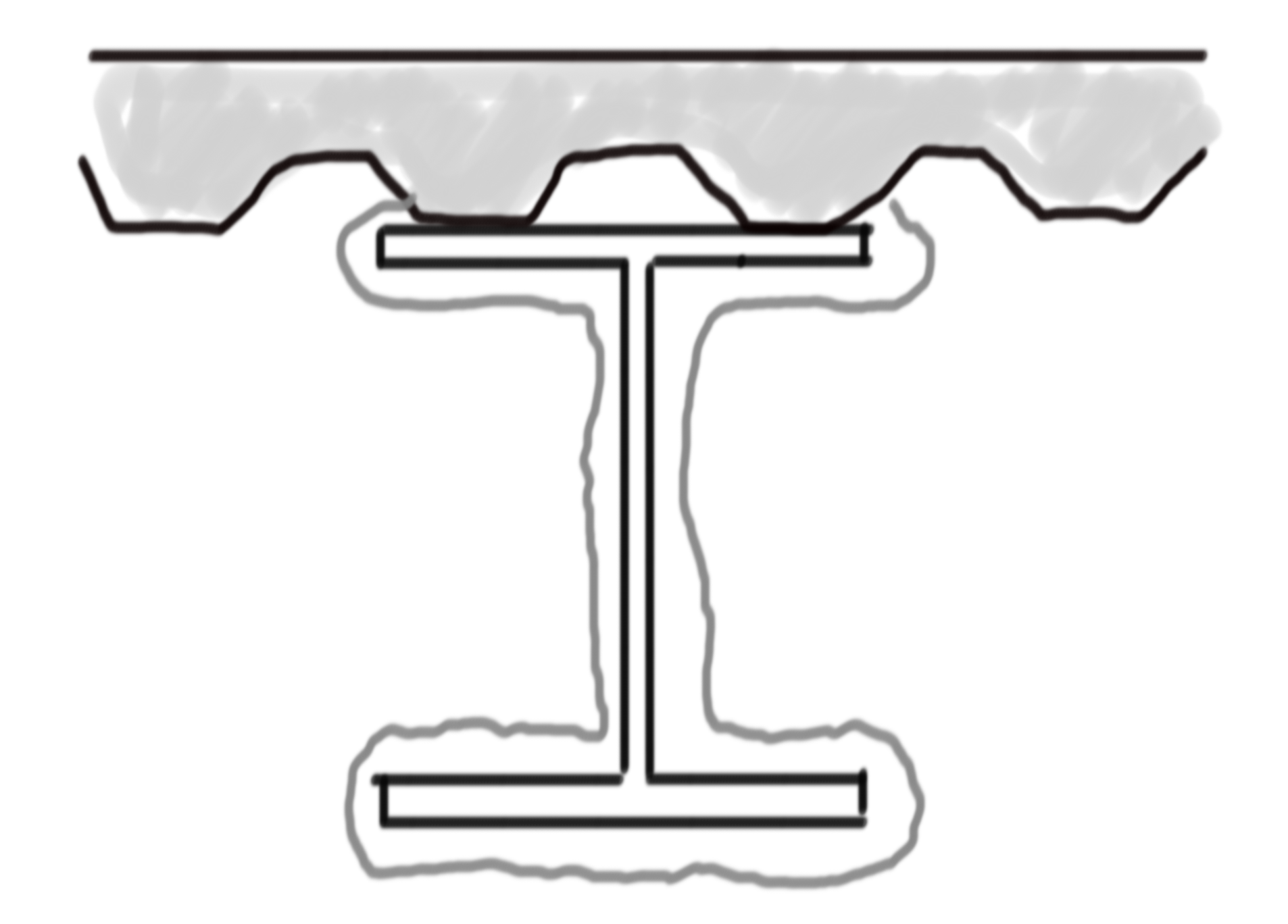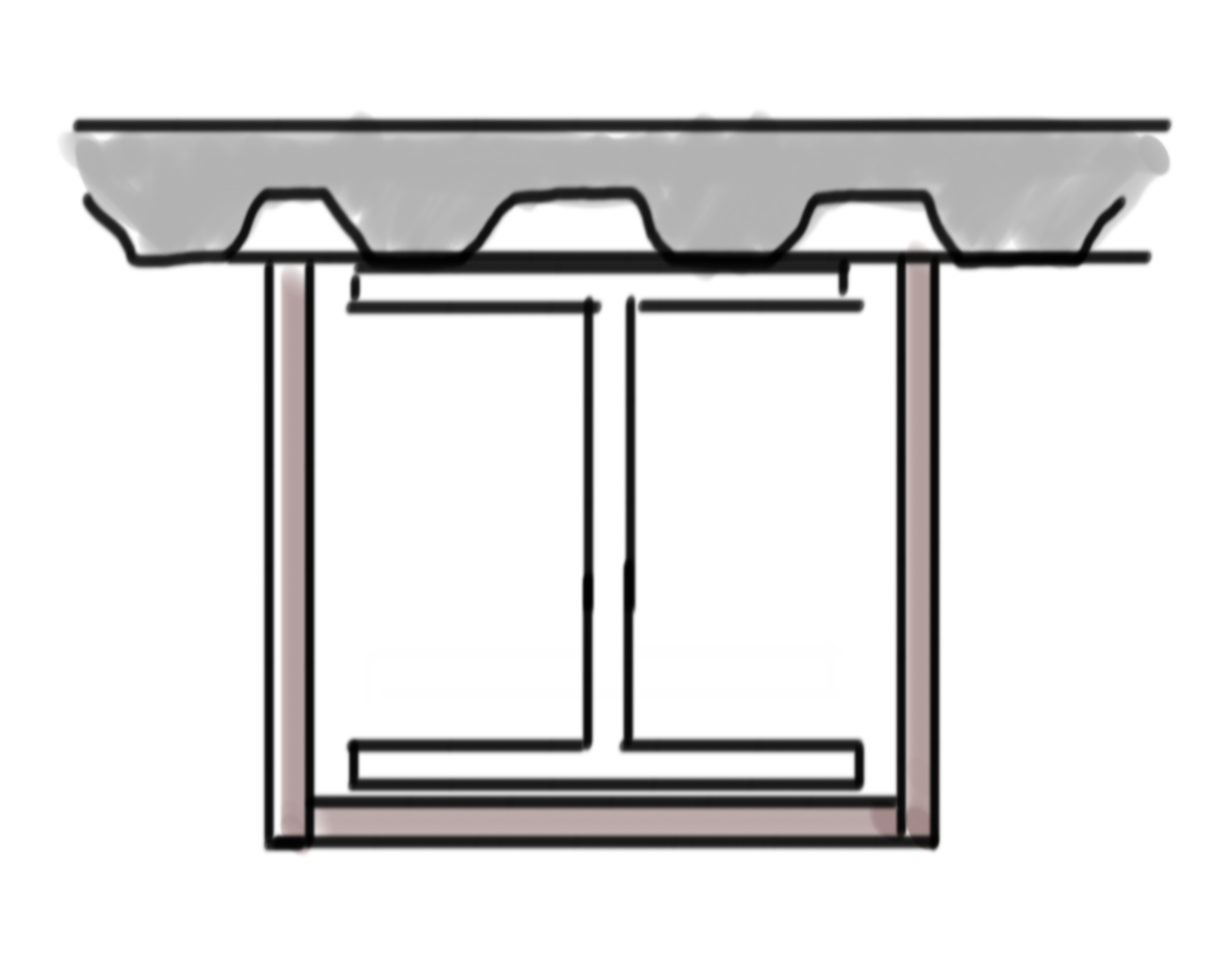In a event of a fire, there should be sufficient time for building occupants to safetely evacuate. However, steel loses significant amounts of strength under high temperatures, leading to a risk of early collapse. A number of different passive fire protection methods are available to enhance their
※ Why Provide Fire Protection for Steel Elements? Explained in 1-Minute
Spray-On Cement

Referred to in Japan as ロックウール工法 (rockwool kouhou), this is a spray on cementitious material (aka vemiculite spray) type of fire protection which is easy to apply. It is also the cheapest amongst the fire protection methods and therefore a very popular choice. Some typical thicknesses and weights are provided below.
| Beams | Columns | |||||
| Required Fire Rating (hrs) | 3 | 2 | 1 | 3 | 2 | 1 |
| Thickness (mm) | 60 | 45 | 25 | 65 | 45 | 25 |
| Unit Weight (kg/m2) | 17 | 13 | 7 | 19 | 13 | 7 |
Note that spray-on cement solutions are considered as wet trade works, and may impact the schedule for other indoor finishing work.
Intumescent Paint
Although the most expensive option on the list, intumescent paint can provide up to 3 hours of fire protection with a much smaller thickness than the alternatives. Typical Dry Film Thickness (DFT) values range from about 1 to 13 mm, and the intumescent paint can expand by up to 50 times the DFT in a fire event.
Calcium Silicate Boards
Referred to in Japan as ケイ酸カルシウム板 (keisan calcium ban).

These are sometimes a popular alternative to spray-on cement since they don't have to be applied to every surface of an I-beam, the applied surface area is comparably smaller, and are a part of the dry trade works. Without specifying any specific products here, thicknesses generally range from 10 mm to 60 mm.
Ceramic Composite Coatings
Referred to in Japan as セラミック耐火 (ceramic fire-coating) and by the popular product name ニューセラ耐火2号 (new ceramic fire-coating no. 2). These composite ceramic-based fire-resistance coatings can help achieve much smaller thickness reductions compared to spray on cement concrete. Density is about 600 kg/m3. Typical thickness values are included below:
| Fire-Resistance Time (hrs) | Ceramic Composite |
| 1 | 10 mm |
| 2 | 20 mm |
| 3 | 30 mm |